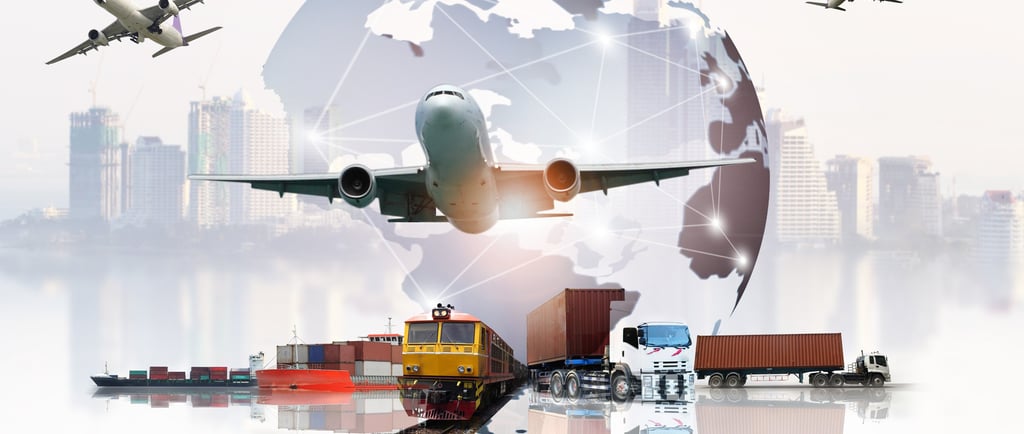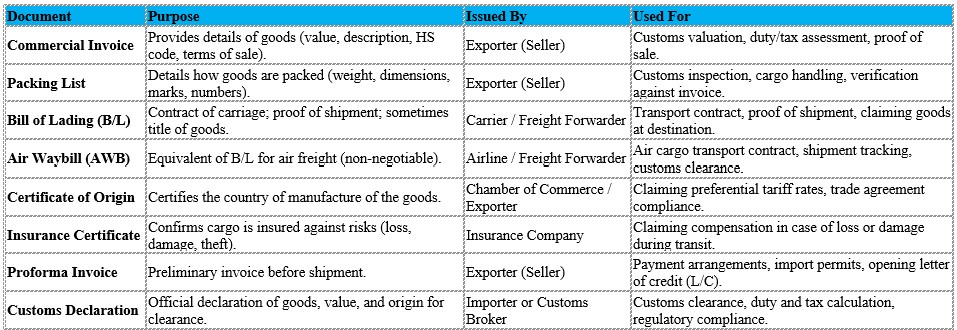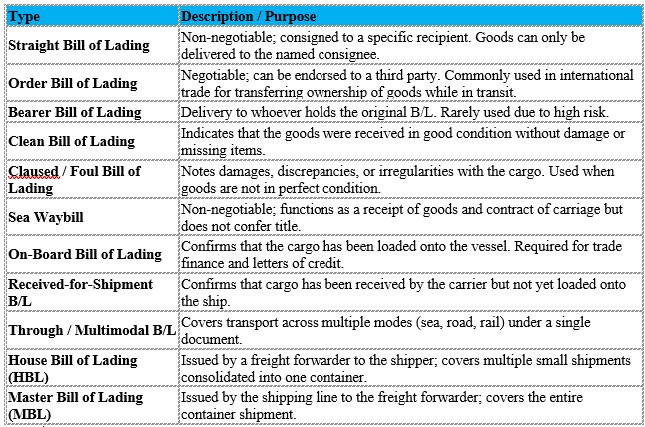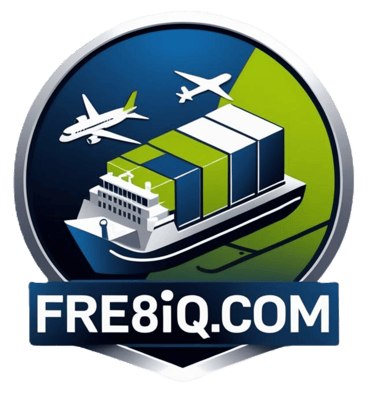The Complete Guide to Freight Documentation (2025 Edition)
Why freight documentation matters (delays, fines, compliance risks). Quick overview: what types of documents are needed. Who this guide is for (importers, exporters, freight forwarders, e-commerce)
THE COMPLETE GUIDE TO FREIGHT DOCUMENTATION (2025 EDITION)
Ahmed CMILT
8/26/20253 min read


Introduction
Freight documentation is the backbone of global trade. Whether you’re shipping by air, sea, or road, accurate paperwork ensures your goods move smoothly across borders. Missing or incorrect documents can lead to costly delays, fines, and even cargo seizures.
This guide is designed for importers, exporters, logistics managers, and anyone involved in international shipping who wants to understand the essential freight documents required in 2025.
2. Categories of Freight Documents
2.1 Commercial Documents
Commercial Invoice
Packing List
Proforma Invoice
2.2 Transport Documents
Bill of Lading (B/L)
[For Sea / Ocean freight shipments traveling as Full Container Loads (FCL), Less than Container Loads (LCL), Roll on Roll off (RORO), Breakbulk cargo]
Air Waybill (AWB)
[For Airfreight cargo shipments. Courier shipments come under Courier Bag Vouchers (CBV)]
CMR (Road Transport Document)
[For all Road freight shipments]
2.3 Customs & Compliance Documents
Certificate of Origin (COO) [Issued at the country of export]
Import/Export Licenses [Varies according to the country of Export/Import]
2.4 Insurance & Finance Documents
Insurance Certificate
[Advisable for high value cargo. Many avoid this to save costs for general cargo]
Letter of Credit
[Advisable for commercial cargo. Normally not used for general cargo]
3. Essential Freight Documents Explained
3.1 Commercial Invoice
Required by customs in every shipment.
Must include HS code, Incoterms, description, value.
Common mistake: vague product descriptions → delays.
What it is: The primary document used by customs for valuation and clearance.
Why it’s important: Required for all international shipments.
Who prepares it: The seller/exporter.
Common mistakes: Vague product descriptions, missing HS codes, incorrect Incoterms.
3.2 Packing List
Used to verify contents of a shipment.
Difference from invoice.
Pro tip: always align quantities & weights.
Purpose: Details the contents, packaging type, and dimensions of each shipment.
Difference from invoice: Doesn’t include pricing.
Who prepares it: The seller/exporter.
Pro tip: Ensure weights and quantities match the invoice.
3.3 Bill of Lading (B/L)
Legal transport contract between shipper & carrier.
Types: Straight, Negotiable, Express.
Functions: receipt, contract, title document.
Definition: A legal transport contract between shipper and carrier.
Functions: Serves as a receipt, contract of carriage, and sometimes a title of goods.
Most Used Types: Master Bill of Lading (MBL), House Bill of Lading, Seaway Bill (Also known as Express release.)
Who prepares it: The Carrier at country of export.
1. Why Freight Documentation Matters
Ensures compliance with customs authorities.
Prevents unnecessary delays and fines.
Protects your cargo legally and financially.
Builds credibility with carriers, customers, and suppliers.
Freight documentation is essential for legal compliance and the smooth, timely clearance of goods through customs. Proper documentation helps avoid penalties and delays, ensures financial transparency, and supports the fair settlement of disputes. Accurate records provide clear evidence of transactions and cargo conditions, establishing accountability among all parties. They also play a critical role in supporting insurance claims and enhancing the overall security, efficiency, and reliability of international shipping operations.




3.4 Certificate of Origin (COO)
Proves where goods are made.
Required for preferential tariffs (FTA countries).
Purpose: Confirms where goods were manufactured.
Why it matters: Required for preferential trade agreements and tariffs.
Who prepares it: The seller at country of Export.
3.5 Air Waybill (AWB)
For air freight shipments only.
Serves as a receipt and contract, but not a document of title.
3.6 Insurance Certificate
Provides proof of cargo insurance coverage.
Protects the buyer/seller in case of damage or loss.
3.7 Import/Export Licenses
Required for restricted or controlled goods.
Issued by government authorities.
4. Country-Specific Notes
USA: Requires importer security filing (ISF) for ocean freight.
EU: Union Customs Code applies, with strict HS code compliance.
India & China: Additional permits may apply for restricted commodities.
5. Common Freight Documentation Mistakes
Using inconsistent data across documents.
Declaring the wrong HS code.
Omitting Incoterms.
Not keeping digital copies ready.
6. Freight Documentation Checklist
✅ Commercial Invoice
✅ Packing List
✅ Bill of Lading / Air Waybill
✅ Certificate of Origin
✅ HS Codes
✅ Insurance Certificate
✅ Licenses/Permits (if applicable)
7. Frequently Asked Questions
Q: What documents are needed for international shipping?
A: At minimum, a commercial invoice, packing list, and transport document (B/L or AWB).
Q: Who issues the Bill of Lading?
A: The carrier or freight forwarder.
Q: Can I ship without a Certificate of Origin?
A: In some cases yes, but you may lose out on tariff benefits.
Q: How long should I keep freight documents?
A: At least 5 years, depending on country regulations.
8. Conclusion
Freight documentation can feel complex, but once you understand the purpose of each document, the process becomes manageable. Keeping your paperwork accurate and consistent not only speeds up customs clearance but also saves you from financial and legal troubles.
👉 Need expert help with freight documentation? Contact Fre8IQ today for support tailored to your business.
Freight related document samples
*For illustration purposes only
